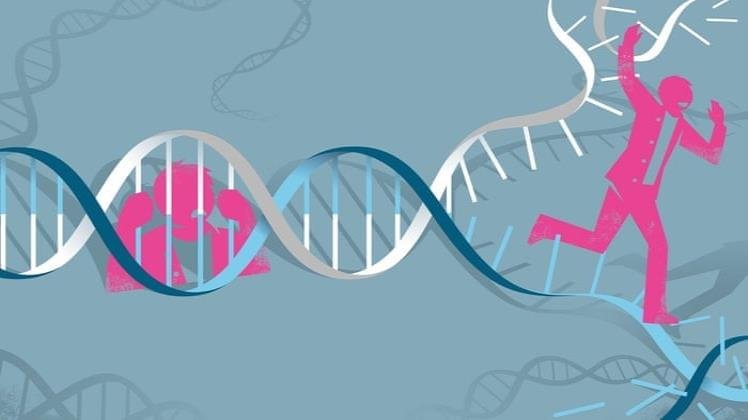In the intricate tapestry of life, your genes play a pivotal role in shaping who you are. These microscopic units of heredity, woven into the fabric of your DNA, hold the blueprint for your development, traits, and even predispositions. Join us on a journey to understand how your genes, nestled within the intricate helix of your DNA, contribute to the unique individual that is you.
The Essence of DNA: The Genetic Code Unveiled
At the heart of the genetic orchestra lies DNA (deoxyribonucleic acid), the fundamental molecule that stores the instructions for your entire being. Resembling a spiraled ladder, DNA comprises nucleotides, each with a sugar, a phosphate group, and one of four nitrogenous bases—adenine (A), thymine (T), cytosine (C), and guanine (G). This specific sequence of bases forms the genetic code, a language that dictates the unique characteristics that make you who you are.
Genes, the segments of DNA, are the functional units carrying the instructions for synthesizing proteins or RNA molecules. The human genome is a vast library of approximately 20,000 to 25,000 genes, each contributing to the complexity and individuality of every person.
Genes at Work: Protein Synthesis and Beyond
Your genes don’t just sit idly within your DNA; they are actively involved in orchestrating the production of proteins. This process occurs in two main stages: transcription and translation.
- Transcription: DNA unwinds within the cell’s nucleus, and an enzyme called RNA polymerase reads the genetic code. This code is transcribed into messenger RNA (mRNA), a complementary RNA molecule.
- Translation: The mRNA travels to the cell’s cytoplasm, where ribosomes read its sequence in sets of three nucleotides called codons. Each codon corresponds to a specific amino acid, the building blocks of proteins. Transfer RNA (tRNA) molecules bring the corresponding amino acids to the ribosomes, facilitating the construction of a protein chain.
This intricate dance of molecules ensures that the genetic code imprinted in your DNA is faithfully translated into the proteins that build and sustain your body.
Genetic Variability: The Dance of Alleles and Mutations
Your genetic code contributes to the incredible diversity observed among individuals. To learn more about DNA testing and how it can provide insights into these genetic variations, consider exploring further.This variability arises from the existence of different versions of genes, known as alleles. Each individual inherits one allele from each parent, shaping traits that range from physical characteristics to susceptibilities to certain conditions.
Occasionally, changes occur in the DNA sequence, leading to mutations. Various factors, including environmental influences and errors in DNA replication, can influence these alterations. While some mutations have no noticeable effect, others can impact protein function and may be associated with genetic disorders or increased susceptibility to certain conditions.
Mendelian Principles: Laws of Inheritance
The principles of inheritance, first elucidated by Gregor Mendel, provide insights into how traits are passed from generation to generation.
- Law of Segregation: Individuals inherit two alleles for a trait, one from each parent. These alleles segregate during the formation of gametes, ensuring that each gamete carries only one allele for each trait.
- Law of Independent Assortment: The alleles for different traits segregate independently during gamete formation, allowing for the inheritance of multiple characteristics simultaneously.
Understanding these principles enables us to predict the likelihood of certain traits within families and contributes to genetic counseling.
Genes and the Environment: A Dynamic Interaction
While your genes provide the foundational code, the environment plays a crucial role in influencing how your genes are expressed. The interplay between genes and the atmosphere is a dynamic relationship that contributes to the uniqueness of each individual.
Environmental factors such as nutrition, exposure to toxins, and lifestyle choices can influence gene expression. Epigenetics, a field exploring changes in gene activity that does not involve alterations to the DNA sequence, highlights the dynamic nature of this interaction.
Conclusion
In the grand tapestry of your existence, your genes are:
- The architects.
- Shaping your physical traits.
- Influencing your predispositions.
- Contributing to the complex individual that is uniquely you.
The dance of molecules within your DNA, the variability introduced through alleles and mutations, and the principles of inheritance all define who you are.
As we unravel the mysteries of genes and DNA, we gain a deeper appreciation for the intricate mechanisms that govern life. Genes and you are intertwined in a fascinating journey, contributing to the marvel of human diversity and individuality. The more we understand the language of our genes, the more we comprehend the intricate symphony that makes each of us a unique masterpiece in the grand composition of life.



